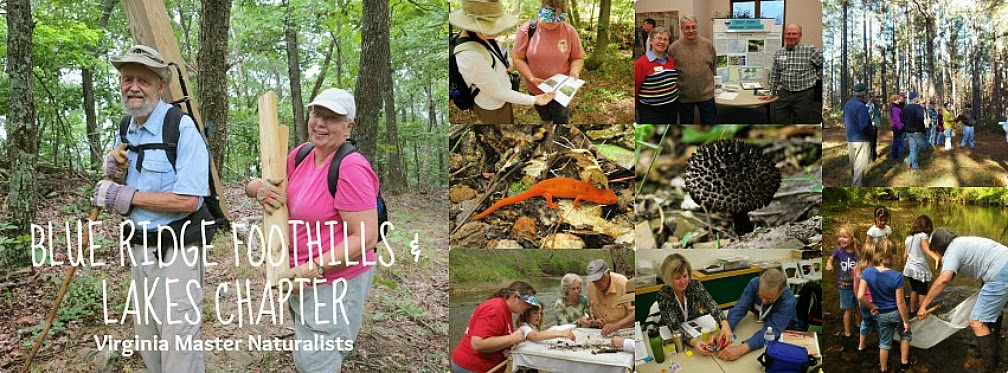BRFAL Chapter Virginia Naturalist en-training enjoy a Forestry Field Trip to Montmorenci Tree Farm in Hardy Virginia
Our gratitude to Tom and Sallie Newbill for hosting this group at their fabulous property and sharing part of their successes with us
 |
| Jennifer Gagnon teaches about forestry |
 |
| Mature female loblolly cones from last Fall |
 |
| Landowner Tom Newbill (center) and Don Kelso of BRFAL Chapter (left) |
Montmorenci Tree Farm is 700 acres total (some devoted to agriculture) where the Newbills grow Loblolly Pines to sell as construction lumber. Virginia is the most northern region to grow Loblolly Pine - Pinus Taeda (for the scientific name, Pinus is the Latin name for the pines and taeda refers to the resinous wood.) The word loblolly means "low, wet place", but these trees are not limited to that specific habitat. Loblolly Pines grow well in acidic clay soil, which is common throughout the South, and are thus often found in large stands in rural places.
The trees reach a height of 98–115 ft with a diameter of 1.3–4.9 ft. Exceptional specimens may reach 160 ft tall, the largest of the southern pines. Its needles are in bundles of three, sometimes twisted, and measure 4.7–8.7 in long; an intermediate length for southern pines. The needles usually last up to two years before they fall, which gives the species its evergreen character. Although some needles fall throughout the year due to severe weather, insect damage, and drought, most needles fall during the autumn and winter of their second year.
The rate of growth is rapid, even among the generally fast-growing southern pines. The yellowish, resinous wood is highly prized for lumber.
Our guide for this field trip was Jennifer Gagnon, she is the coordinator of the Virginia Forest Landowner Education Program and an Extension Associate in the Department of Forest Resources and Environmental Conservation at Virginia Tech.
| A great day for Virginia Master Naturalists seeing the farm via Mr Newbill's John Deere |
 |
| Approx 15 students were in the field learning about Forestry |
 |
| Seeing the forest through the trees (bark of a loblolly pine) |
Tom and Sallie Newbill were voted Tree Farmers of the Year in 2008.
Tom and Sallie Newbill are bucking the trend and doing what so many small forest owners dream of doing. While fragmentation is a big challenge of today's Virginian forests as farm and timber lands are divided into smaller parcels, some almost too small for proper management, the Newbills have been bringing land together into a bigger, well-managed unit.
In addition to timber production, about a quarter of Montmorenci Tree Farm's land is devoted to stream management zones, wildlife plots, and cropland rented to a local dairy farmer. Tom actively manages the wildlife plots and turkey, deer and quail abound on the land. Read more about this award and the Newbills here from the Virginia Forestry Association.
BRFAL Chapter of Virginia Master Naturalist want you get outside and learn something new! Visit your local tree farm or state park. Can you see the forest through the trees? Maybe seeing the trees will be an experience in itself! I know it was for this Virginia Naturalist en-training.
*Learn more about Loblolly pines here.

Thanks a bunch Shellie! This was a great excursion. So grateful to be able to advanced my knowledge in the world of trees and dairy farms. Spending a Saturday with some great folks is always great too.
ReplyDeleteMelissa